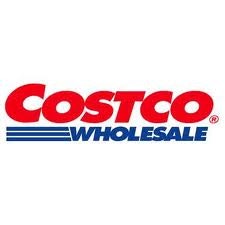
Costco continues to improve
Costco is the proud owner of 618 member warehouses, 447 of which are located in the United States and Puerto Rico. Member warehouses are also located in Canada, Mexico, the United Kingdom, Japan, Taiwan, South Korea, and Australia. Needless to say, global exposure is good, and it’s only going to increase.
According to Alexa.com, Costco Wholesale Corporation (NASDAQ:COST) has a strong online presence, ranking No. 1,128 in the world and No. 231 in the United States for online traffic. Pageviews-per-user and time-on-site have been close to even over the past three months. A more important stat is that the most overrepresented age demographic is 55+. As baby boomers continue to retire in droves, they’re incomes will not be as strong as they had been in the past. This, in turn, will lead these retirees to search for bargains. They can find those bargains at places like Costco Wholesale Corporation (NASDAQ:COST), Sam’s Club, Wal-Mart, and Target Corporation (NYSE:TGT).
While Wal-Mart Stores, Inc. (NYSE:WMT) is a great bargain-shopping option for a substantial portion of the population, many of these baby boomers wouldn’t be seen in a Wal-Mart on a bet. Some may choose to shop at Target Corporation (NYSE:TGT), thanks to its reputation for cleanliness and a more presentable crowd. But many will opt for Costco, which is the classiest option of the bunch. Furthermore, most Costco shoppers have above-average incomes as Costco only accepts cash, debit cards, and American Express. This customer base has allowed Costco memberships to increase even during recessions.
Costco Wholesale Corporation (NASDAQ:COST) recently increased its membership fees. This is important, because the majority of the company’s revenue comes from membership fees. An Executive Membership now costs $110 per year (2% rewards on all purchases), a Business Membership costs $55 per year (can purchase products for resale/includes household membership), and a Gold Star Membership costs $55 per year (household membership.) Increased membership fees are good news for investors as it increases revenue.
In comparison, Sam’s Club is a little cheaper. Sam’s Plus costs $100 per year (businesses and individuals enjoy instant savings and extra protection service plan.) Sam’s Business costs $45 per year (early shopping hours plus instant savings.) And Sam’s Savings costs $45 per year (members-only prices.)
Sam’s Club doesn’t have as strong of an online presence as Costco, but its traffic rankings are still very respectable — No. 1,817 globally and No. 385 domestically.
Costco vs. peers
Costco Wholesale Corporation (NASDAQ:COST) has seen an average monthly sales growth just north of 7% so far this year. Same-store sales increased 4% in April and 5% in May. Total net sales also increased 7% in May. Costco sports a profit margin of just 1.94%, but that shouldn’t be looked at as a negative considering revenue is primarily based on membership fees. Other fundamental positives include a debt-to-equity ratio of 0.46 versus an industry average of 0.70, and a 1.10% yield. However, Costco is a little expensive, trading at 24 times earnings.
Wal-Mart Stores, Inc. (NYSE:WMT) is only trading at 15 times earnings. It sports a profit margin of 3.62% (impressive considering the business model), and it yields 2.50%. Wal-Mart’s growth rate isn’t as strong as Costco’s, but growth has been incredibly steady through the years. Another important difference between Costco and Wal-Mart is resiliency. Both companies are resilient, but Costco saw slight declines in revenue and earnings in 2009, whereas Wal-Mart didn’t miss a beat in either area during that difficult time.
Target Corporation (NYSE:TGT) didn’t miss a beat in revenue or earnings in 2009, either. On the other hand, both Target’s and Costco’s stocks dropped approximately 40% during the height of the financial crisis. Wal-Mart’s biggest stock decline during that time was approximately 20%, and it actually appreciated in 2008.
Getting back to Target, it’s currently trading at 17 times earnings, it sports a profit margin of 3.83% (similar to Wal-Mart,) and it yields 2.40%. If you’re going to choose something other than Costco Wholesale Corporation (NASDAQ:COST), Wal-Mart will likely be a better long-term option than Target, but both companies are strong.
Conclusion
Costco Wholesale Corporation (NASDAQ:COST) is a very well-managed company with solid growth potential. If the stock suffers a significant decline, then it can be looked at as an opportunity to add to a position. As baby boomers continue to retire, they will look for bargain-shopping opportunities. Costco fits the bill.
The article Baby Boomers Can Make You Money originally appeared on Fool.com and is written by Dan Moskowitz.
Dan Moskowitz has no position in any stocks mentioned. The Motley Fool recommends Costco Wholesale (NASDAQ:COST). The Motley Fool owns shares of Costco Wholesale. Dan is a member of The Motley Fool Blog Network — entries represent the personal opinion of the blogger and are not formally edited.
Copyright © 1995 – 2013 The Motley Fool, LLC. All rights reserved. The Motley Fool has a disclosure policy.




